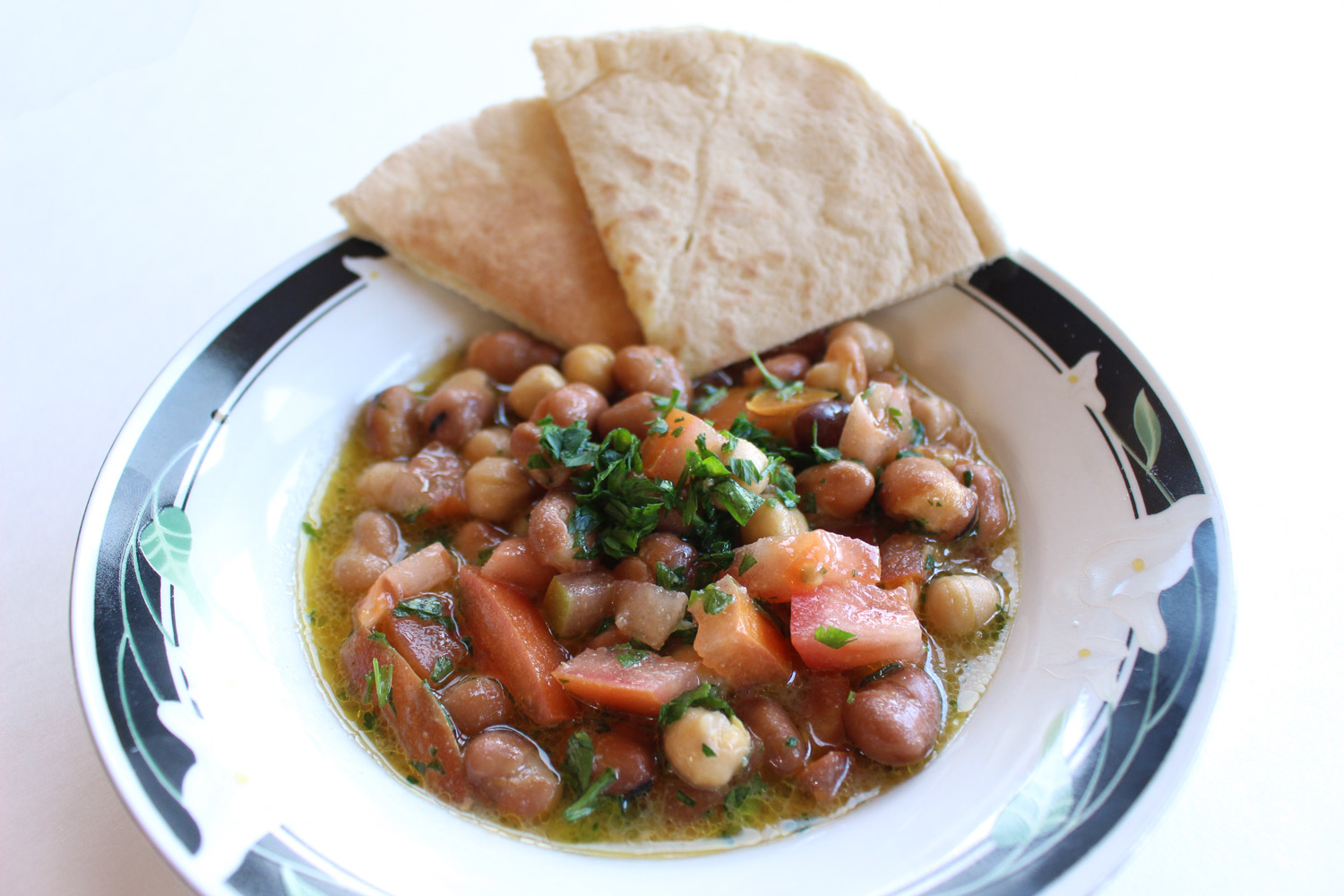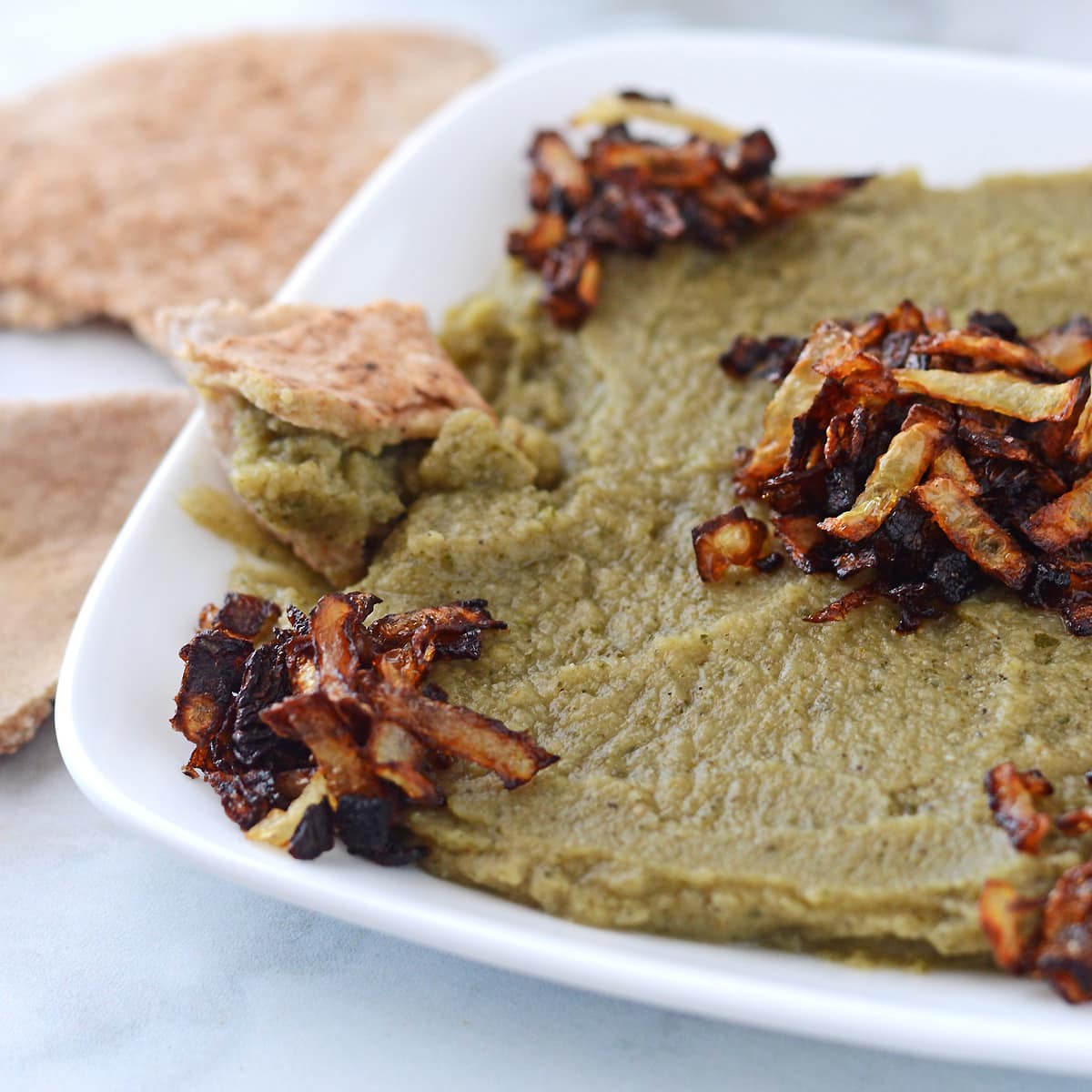“More baladi bread, please!”
A statement commonly heard in any oriental eatery in Egypt, regardless of time and place.
Toasted or not, baladi bread is known for its versatility due to its thin, stretchy texture. Fresh from the oven, it resembles a hollow balloon of dough waiting for its next culinary adventure as a sandwich or a dipping utensil.
Dipping is an essential part of Egyptian cuisine, whether during breakfast, lunch, or dinner. The dipping tactic is humorously referred to as wedn otta, which translates to “cat ear.” This is because a small piece of bread strategically folded to collect as much sauce or food as possible per bite ends up resembling a cat’s ear. It can be described as creating a dozen very small sandwiches throughout a meal, rather than scooping up food directly into the bread to make a sandwich.
When it comes to dipping, there’s the straightforward, globally recognized approach that entails the presence of a dip, like sesame seed paste, otherwise known as teheena or tahini. This roster includes a huge variety of dips like the delicious eggplant-tahini duo that is baba ghanoug or the popular chickpea dip known as hummus. Other lesser-known dips include bissara, which is a bean dip that originated in ancient Egypt.
When discussing the concept of dipping, the winning molasses-tahini combo known as ‘asaal we teheena cannot be overlooked. Even the pickiest of eaters can’t deny the harmonious blend of flavors that comes to life when the sweetness of the molasses meets the rich sesame flavor of tahini. While this dip can be used with baladi bread, it is more associated with oriental pastries made with ghee, referred to in Arabic as feteer meshaltet.

While the above references are unsurprising because dips are naturally made for dipping, it’s interesting to note that dipping is widely common for main dishes as well. These include vegetable dishes like molokheyya, mosaka’a, and okra, which, if not combined with bread, will be paired with another filling carbohydrate: rice. And of course, the most popular Egyptian food eaten with bread is the nation’s most common breakfast meal: fuul.
Other cultures that heavily rely on dipping include the Indian culture, making baladi bread similar in concept to the Indian naan. This is the case for many other countries, perhaps because a lot of the foods are sauce-based and the presence of bread helps people soak up every last bit of flavor from the plate – especially since finishing one’s food is heavily associated with Egyptian superstition.

Another potential argument is that bread makes the meal more filling, which is needed in countries that have large poverty rates; a meal is, simply put, meant to sustain for as long as possible. This is a rather melancholic way of looking at it, but the good news is that Egypt’s poverty rate decreased for the first time since 1999 during FY 2019/2020 from 32.5 percent to 29.7 percent.
On the other hand, the crucial presence of carbohydrates in any Egyptian meal may originate from the country’s population of farmers, who work for long, strenuous hours in the field and need to carb-load for energy. It’s interesting to note that bread was also an important staple for ancient Egyptians, so much so that many pharaohs were buried with bread for sustenance in the afterlife. Some of these bread loaves can even be found in Egyptian museums today.
Regardless of how this dipping culture became so popularized in Egypt, one thing is for certain: Egyptian food is so delicious that dishes deserve to be wiped clean so that every last drop of sauce is devoured, and Egyptians are forever thankful that baladi bread does the job so well.







Comments (0)